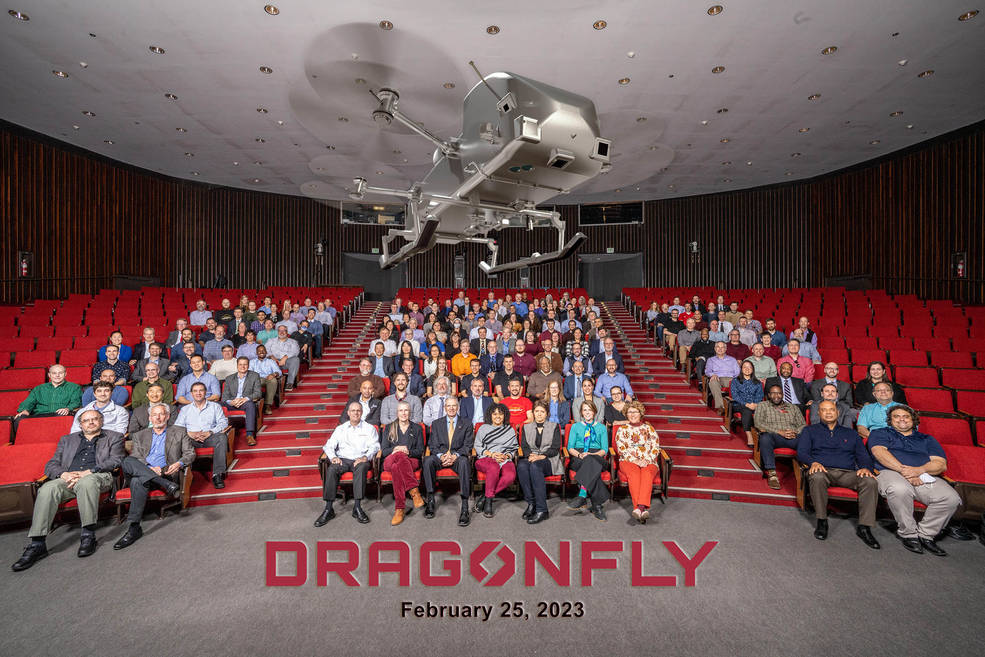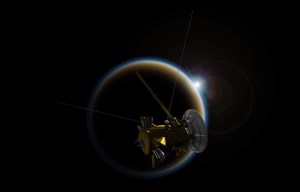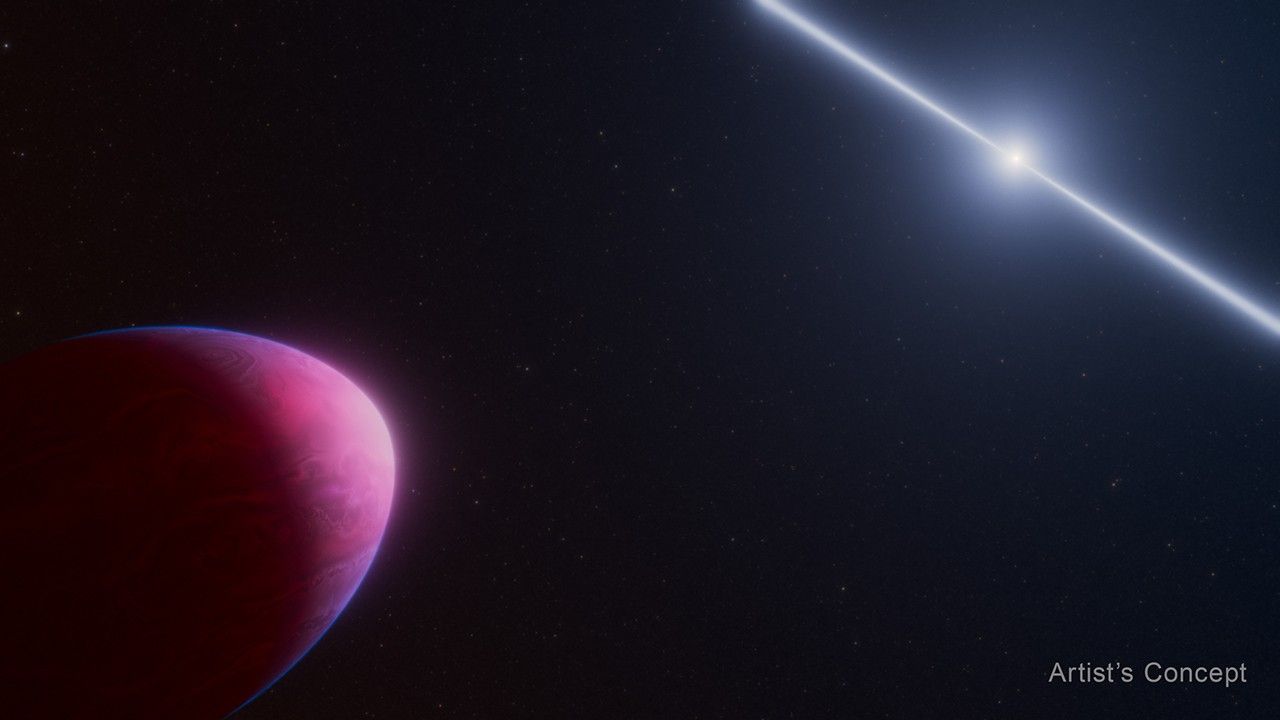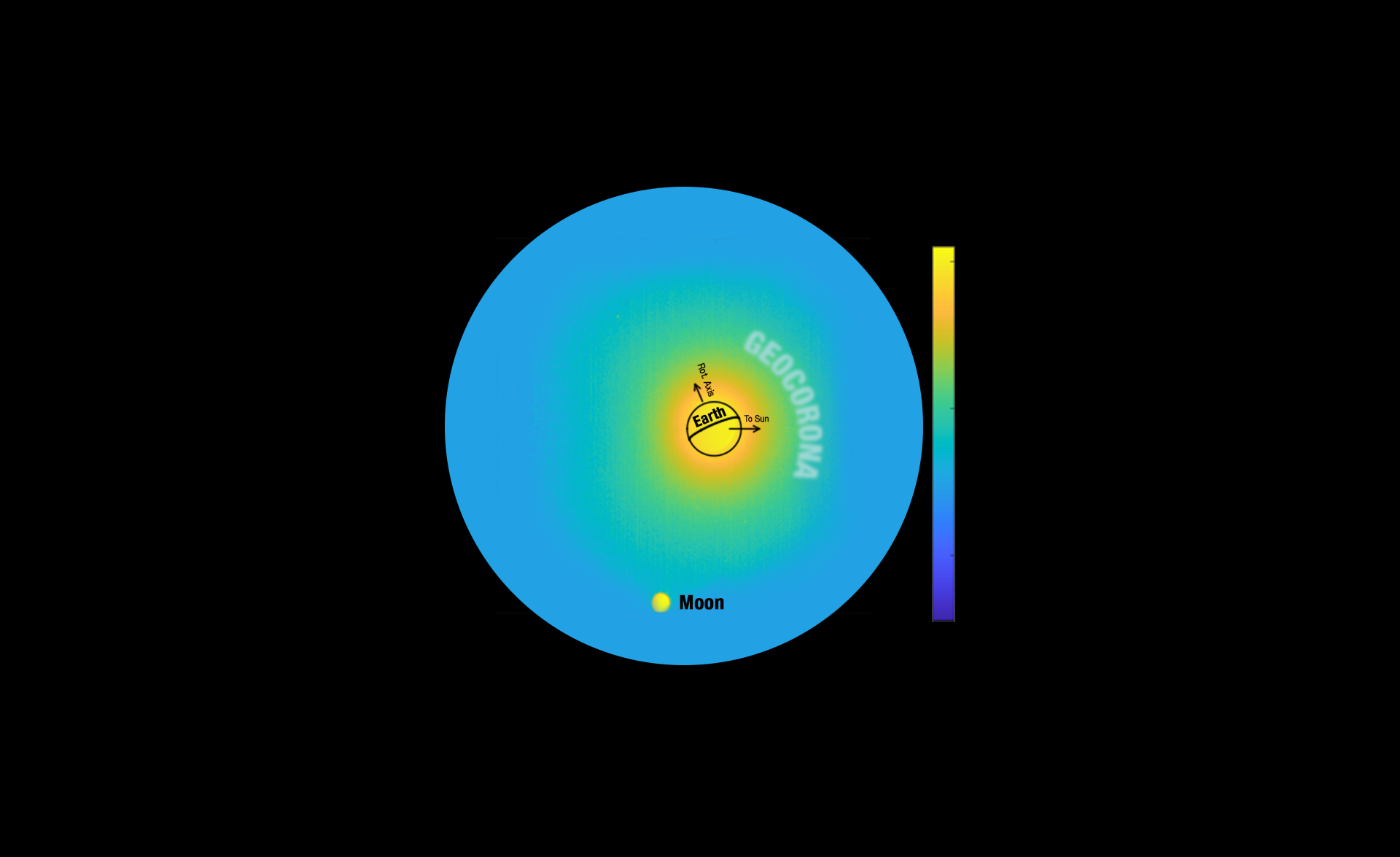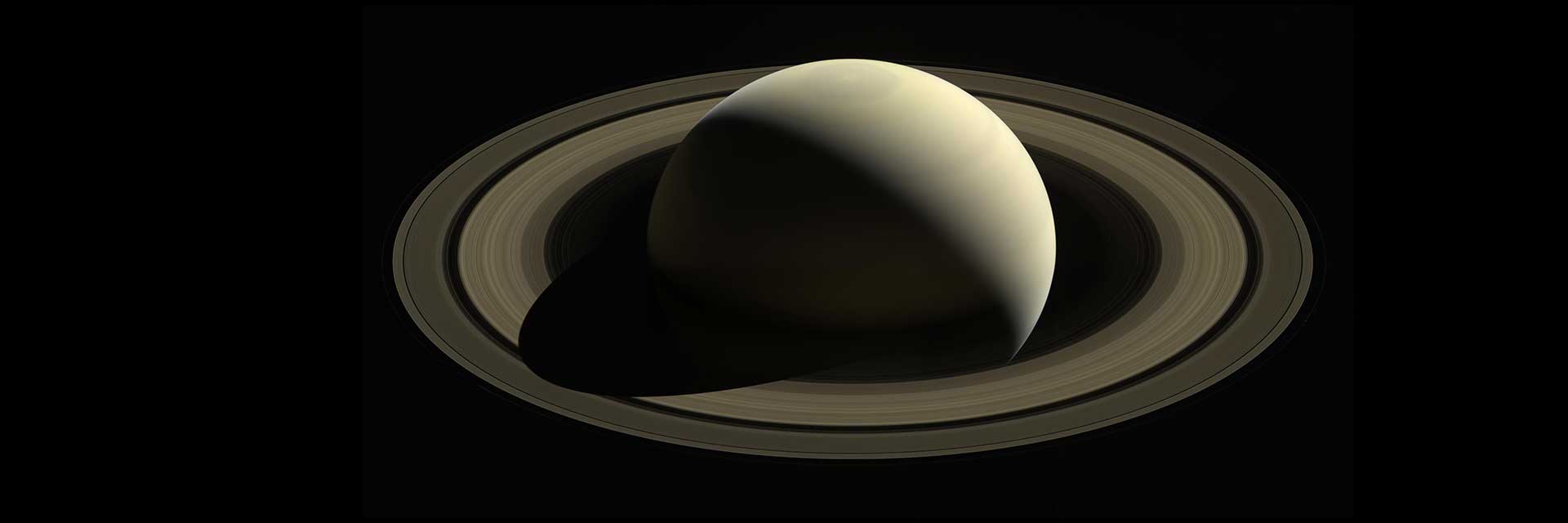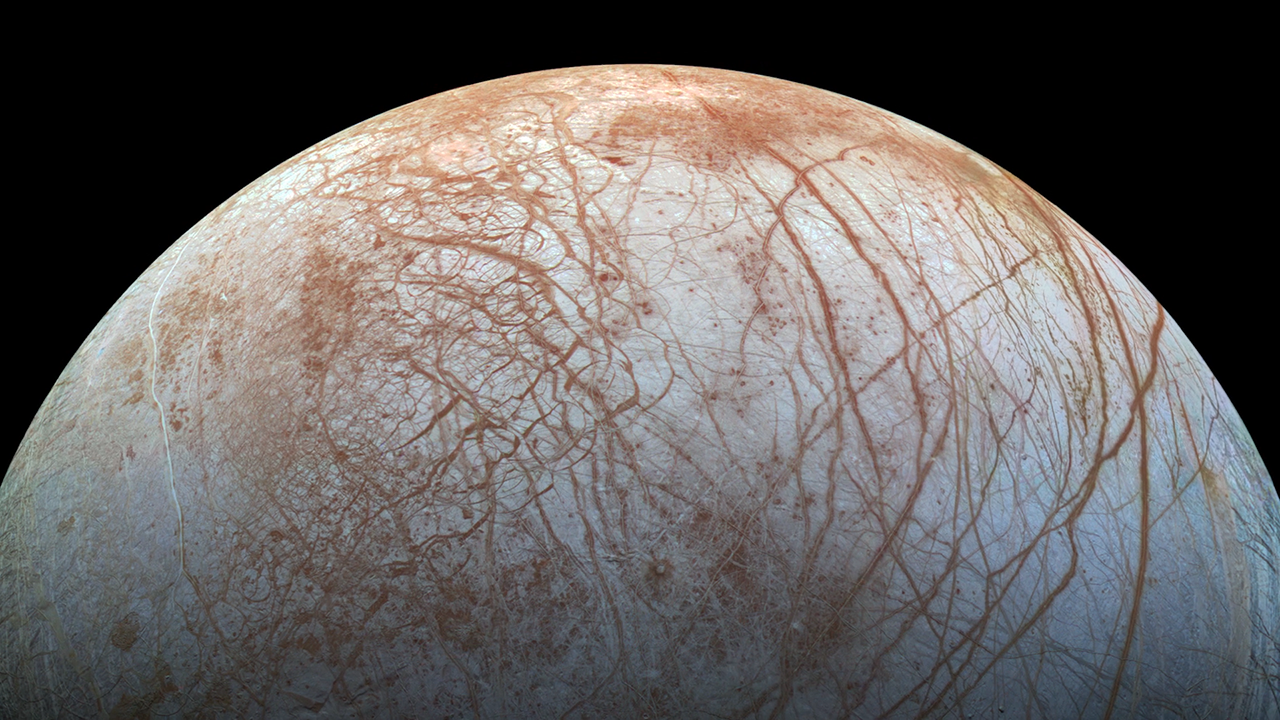Before it can fly its revolutionary rotorcraft over the organic dunes of Saturn’s moon Titan, NASA’s Dragonfly mission team needs to navigate a series of independent reviews to demonstrate the flight project is on track.
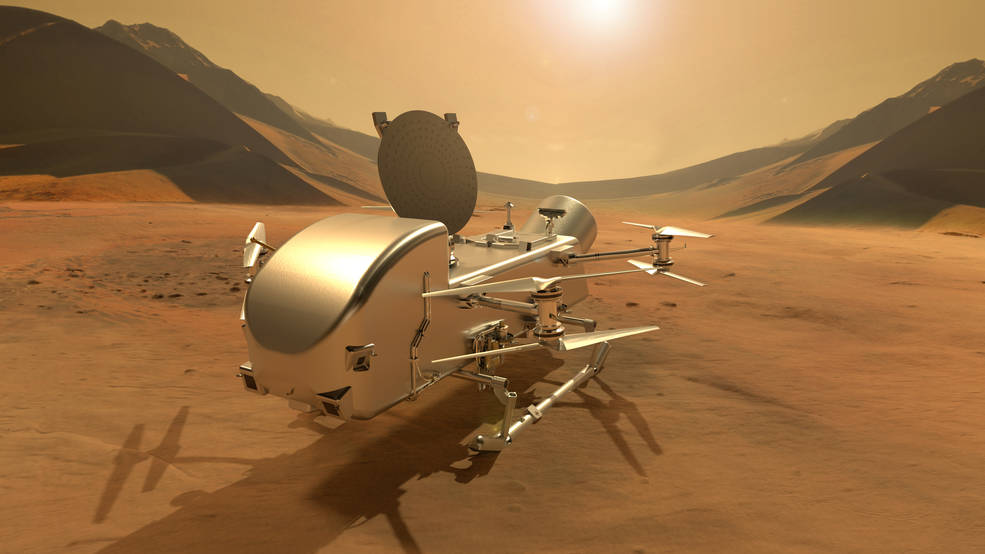
Led by the Johns Hopkins Applied Physics Laboratory (APL) in Laurel, Maryland, the team recently crossed a major milestone on that path, successfully passing all the technical requirements and standards of the weeklong Preliminary Design Review (PDR) that wrapped up on March 3.
“I am very proud of the entire Dragonfly team,” said Bobby Braun, head of APL’s Space Exploration Sector. “APL, NASA’s Goddard Space Flight Center, Lockheed Martin, and all of our partners really came together to deliver a credible technical baseline. The fidelity and thought that went into each decision was clearly communicated and forms a solid foundation upon which the team can build.”
The PDR – a requirement for all NASA missions – covers topics such as spacecraft design, mission requirements, science plans, schedule, cost, and risk. Held at APL, which manages the mission and will build and operate the Dragonfly lander, the PDR included more than 60 presentations to a panel of external experts tasked with evaluating and assessing mission progress for NASA.
“I’m excited to see all of the Dragonfly mission’s design components coming together,” said Lori Glaze, director of the Planetary Science Division at NASA Headquarters in Washington. “This mission team’s hard work has resulted in the technical design for a spacecraft that can conduct compelling science to increase our understanding of Titan.”
NASA will consider the board’s findings in a confirmation review later this year, examining Dragonfly’s cost, schedule, and the recommended baseline plan forward.
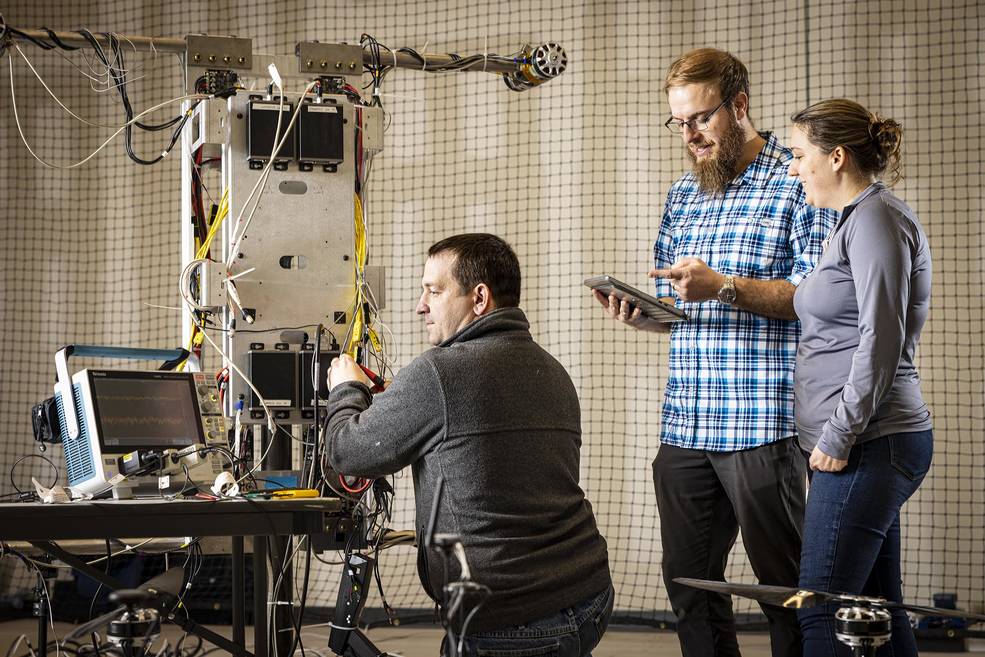
“The team did a fantastic job,” said Dragonfly Principal Investigator Zibi Turtle, also of APL. “Everyone worked so hard to make sure the review board had a clear idea not just of the great progress we’ve made to close out the design but of our technical challenges, and how we plan to overcome them. We’re incredibly excited to have completed this step, and are ready to continue our work on the next phase of Dragonfly development — including testing in the large Titan-environment chamber here at APL over the next year.”
Dragonfly centers on a game-changing approach to planetary exploration, employing a rotorcraft-lander to travel between and sample diverse sites on this mysterious world. Dragonfly will characterize the habitability of Titan’s environment, investigate the progression of prebiotic chemistry in an environment where carbon-rich material and liquid water may have mixed for an extended period, and even search for chemical indications of whether water-based or hydrocarbon-based life once existed on Titan.
Dragonfly is being designed and built under the direction of the Johns Hopkins Applied Physics Laboratory in Laurel, Maryland, which manages the Dragonfly mission for NASA. The team includes key partners at NASA’s Goddard Space Flight Center in Greenbelt, Maryland; Lockheed Martin Space in Littleton, Colorado; NASA’s Ames Research Center in Silicon Valley, California; NASA’s Langley Research Center in Hampton, Virginia; Penn State University in State College, Pennsylvania; Malin Space Science Systems in San Diego, California; Honeybee Robotics in Pasadena, California; NASA’s Jet Propulsion Laboratory in Southern California; the French space agency (CNES) in Paris; the German Aerospace Center (DLR) in Cologne, Germany; and the Japan Aerospace Exploration Agency (JAXA) in Tokyo. Dragonfly is the fourth mission in NASA’s New Frontiers Program, managed by NASA’s Marshall Space Flight Center in Huntsville, Alabama, for the agency’s Science Mission Directorate in Washington.
Learn more about the mission at www.nasa.gov/dragonfly.

























